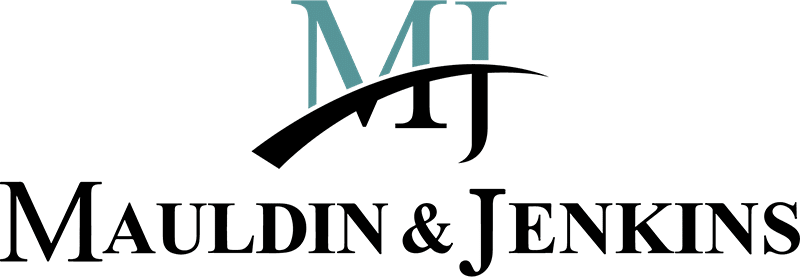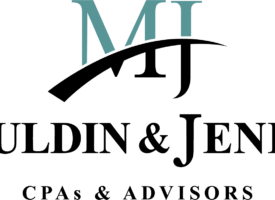By: Jon Schultz, CPA, Brent Ullrich, CPA, and Kimberly Haynes, CPA
After much back and forth on Capitol Hill, the One Big, Beautiful Bill Act (OBBBA) is now law. Its passage means big change for educational institutions, particularly for higher education institutions. Some of the sweeping legislation’s provisions will impact organizations of all types, while others affect only private institutions. Here are some of the highlights of its impact on the education industry.
Endowments
The bill expands excise taxes on net investment income (NII) for private institutions, adding religious organizations to the list of covered entities. Beginning in 2026, organizations with at least 3000 students will owe excise taxes based on the size of the endowment relative to enrollment:
• $500,000 to $749,999 per student incurs a 1.4% tax
• $750,000 to $1,999,999 per student incurs a 4% tax
• $2 million+ per student incurs an 8% tax
Though the final bill does not exclude international students from the per-student calculation, this provision of OBBBA creates a higher tax burden on many institutions.
Financial Aid
OBBBA redraws the rules for financial aid, affecting both students and schools. Key changes include:
- If other aid (including state or private grants and scholarships) fully covers the cost of attendance, students won’t be eligible for Pell Grants.
- Pell Grants can cover accredited workforce training programs lasting 8 – 15 weeks.
- Grad PLUS loans are ending; other loans to students and parents will be limited:
- Parent PLUS loans cannot exceed $20,000 annually and $65,000 in total, but both limits are per child.
- Overall borrowing by students cannot exceed $257,500.
- Graduate loans are capped at $20,500 per year and $100,000 lifetime.
- Professional students can borrow up to $50,000 a year and $200,000 in total.
- Federal limits on loans assume full-time enrollment; enrolling for fewer hours will further reduce borrowing caps on a pro-rated basis.
- Schools have the option to set lower limits for specific programs.
- As of July 2026, new borrowers will have access to only two repayment plans: a standard, fixed-payment plan that lasts 10-25 years and the Repayment Assistance Plan, a new income-driven plan that requires payment for 30 years.
- If more than half of those who complete an educational program earn less than high school graduates (for undergraduate programs) or holders of a bachelor’s degree (for graduate programs) in the state, students at that institution will lose eligibility for Direct Loans to pursue the program. Loss of eligibility occurs only after a program fails the earnings test in two out of three years.
Philanthropic Donations
New tax incentives could benefit educational institutions by boosting individual donations:
- Taxpayers who claim the standard deduction will be able to deduct charitable donations of up to $1,000 ($2,000 for joint filers), beginning in 2026. (Note that contributions to donor-advised funds are not eligible.)
- The following year (beginning Jan. 1, 2027), there will be a new tax credit, worth up to $1,700, for those who make cash donations to qualified organizations that primarily grant scholarships to K-12 schools (subject to certain restrictions and limitations).
However, other OBBBA provisions may slow the flow of revenue from longstanding donors:
- Itemizers can only claim a deduction for contributions above 0.5% of the donor’s adjusted gross income (AGI)
- Deductions for corporate donations are limited to amounts that exceed 1% of taxable income, with a 5-year carryforward period on giving below that threshold.
- The bill caps deductions for charitable donations by those in the highest individual tax bracket at 35 cents on the dollar (meaning a Taxpayer in the highest 37% tax bracket will only get a 35% deduction on the donation).
Planning Note: Individuals and corporations may want to consider reviewing their giving strategies going forward (stacking contributions in a given year when most tax advantageous).
Other Tax Provisions
All schools need to be aware of additional elements in the bill that may affect operations or the institution’s role as an employer, including:
- Excise taxes on compensation: Tax-exempt organizations are subject to a 21% excise tax on executive compensation above $1 million. OBBBA covers all employees, including former employees, for this tax.
- Educational assistance by the employer: Starting in 2026, tax-free employer-provided educational benefits will be inflation-indexed. These benefits can cover both student loan repayment and tuition.
- Form 1099: The threshold for reporting non-W2 payments rises to $2,000 from $600, the previous threshold.
- Energy tax credits: OBBBA brings an early end to tax credits under Section 179D and the Inflation Reduction Act that incentivize green construction and energy efficiency, including electric vehicle adoption and alternative energies like wind and solar. Among other impacts, the new rules prevent higher ed institutions from allocating (effectively selling) their credits to building designers.
These are only some of the changes that could affect your organization; other provisions impact tax rules for fringe benefits relating to paid family and medical leave, employer-provided childcare, dependent care assistance, and bicycle commuting.
Medicaid
While Medicaid spending does not directly affect educational institutions, OBBBA’s drastic cuts are likely to create indirect impacts that may be significant to both public and private organizations. The most obvious result will be an increase in the number of students who lack medical coverage. In the bigger picture, increased state-level costs for Medicaid and other healthcare funding may lead to fewer dollars flowing from states to schools, colleges, universities, and student financial aid.
Respond Strategically
Facing major change can feel daunting. There’s a lot to process in the OBBBA, with many things to consider as you formulate your response plan. Mauldin & Jenkins’ knowledgeable education advisors know what’s at stake and bring smart strategies to help you manage change effectively. Contact us today for the answers and insights you need now.


